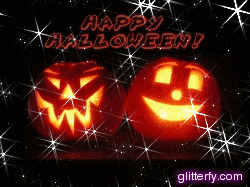A Brief History of Halloween
Halloween has its origins in the ancient Samhain festival celebrated by the Celts to signify the end of summer. Many of today’s Halloween customs can be traced back to Celtic times. Halloween is also known as All Saint’s Day. The Roman Catholic Church created this name to celebrate saints without their own specific days during the rest of the year.
European Halloween Customs
Bonfires are often lit in Ireland on October 31st. This tradition dates back to the Celts, who used fire to ward off evil spirits. The Celts also dressed in animal skins on Halloween, and believed that the dead returned to earth disguised as various creatures.
One of these creatures was a black cat, which remains a familiar symbol of Halloween.
Apples also have strong ties to Halloween. Some believe the fruit can be used to predict future partners. Another Halloween custom involves bobbing for apples in water. In Scotland this is referred to as “dooking.”
Jack o’ Lanterns are a familiar site at Halloween. There are several theories about where they originate from. An 18th century Irish folk tale features a character called Jack, who is refused entry to both heaven and hell upon his death. The Devil shows him pity and presents Jack with a lump of coal. Jack then places the coal inside a hollowed out turnip, lights it and uses I to illuminate his path.
Other explanations include references to the will o’ the wisp phenomena, when peculiar lights are seen to form over peat bogs. Night watchmen were sometimes referred to as Jack o’ Lanterns, providing yet another possible origin for today’s pumpkin carving.
Halloween in America
Halloween did not become a major festival in America until the early 19th century, when it was popularised by the huge number of Irish immigrants arriving. Nowadays it is the second largest festival in the country, after Christmas. European customs such as trick or treating and wearing fancy dress are widespread.
WATCH THIS INTERESTING VIDEO...


